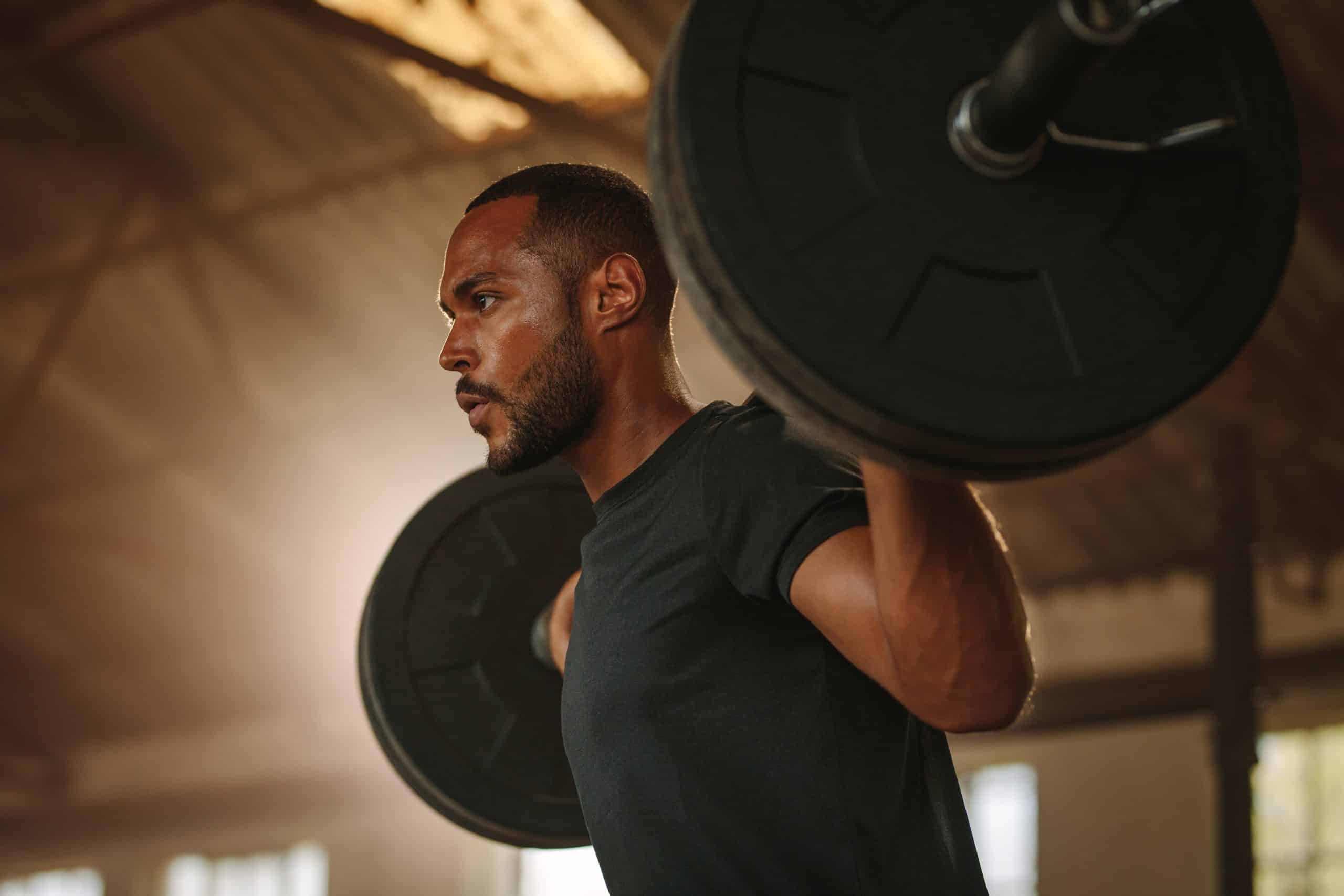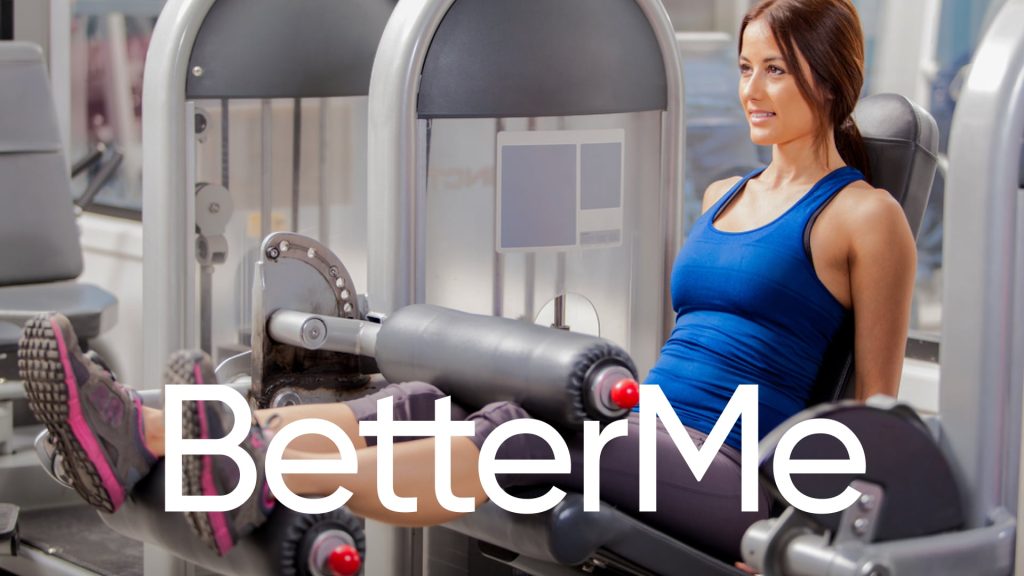The primary function of the calf is to extend the foot and toes, as necessary for walking and running. It also assists with balance while standing. When people think of getting a toned physique, they don’t usually think of working their calf muscles. However, having strong and well-defined calves can make a big difference in the overall aesthetics of your physique (5). No one wants to have “chicken legs,” after all. The standing barbell calf raise is a great exercise for targeting the calves (5). This move can be performed with a variety of different weights, making it perfect for both beginners and advanced lifters alike. There are many benefits to performing the standing barbell calf raise, of which we’ll explore in more depth below. In addition, we’ll also provide some tips on how to perform the exercise correctly, as well as some variations that you can try. Finally, we’ll conclude with a few mistakes that you should avoid to get the most out of this exercise.
Are Standing Barbell Calf Raises Good?
Exercises that target the major muscles in the lower body are often thought to be the best exercises for overall leg development. However, this isn’t always the case.
Isolation exercises like the standing barbell calf raise can actually be quite beneficial for building strength and muscle mass in the lower body, especially in the calves (6).
The calves are a notoriously difficult muscle group to build. This is due in part to their high level of endurance, which means that they’re resistant to fatigue.
As a result, traditional exercises like squats and leg presses don’t always do the trick when it comes to calf development. They test and improve your muscular endurance, but they don’t always lead to significant gains in muscle mass (3).
The standing barbell calf raise, on the other hand, is an exercise that specifically targets the calves (5). This makes it an ideal move for those who are looking to add some size and definition to their lower legs.
In addition to building strength and muscle mass, the standing barbell calf raise can also help improve your balance and stability (2). This is due to the fact that the exercise requires you to maintain a stationary position while performing the move.
This makes it a great “functional” exercise, which is any type of exercise that mimics real-world movement patterns. Functional exercises are often thought to be the best type of exercises for overall fitness and health.
Read More: Barbell Workout Plan For Beginners
Other benefits worth mentioning include:
Lower Risk Of Injury
The muscles in your calves are designed to absorb impact. As such, they act as a shock absorber for your joints and bones. By strengthening your calf muscles, you can help to reduce the risk of injuries like ankle sprains and knee pain (2).
Improved Circulation
The standing barbell calf raise is an excellent way to improve blood circulation in the lower legs (1). This is due to the fact that the exercise requires you to flex and extend your ankles, which helps to pump blood through your veins.
Improved Athletic Performance
Strong calf muscles can improve your running and jumping ability, as well as your overall agility (6). This makes the standing barbell calf raise a great exercise for athletes, as well as for those who simply want to move better in their everyday life.
Now that we’ve covered some of the benefits, let’s take a look at how to properly perform the standing barbell calf raise.
Standing Barbell Calf Raise Muscles Worked
There are several, lesser known, muscles in the calves. The gastrocnemius is the large, two-headed muscle that most people think of when they think of the calves. This muscle originates at the back of the knee and inserts into the Achilles tendon.
The gastrocnemius is responsible for plantar flexion, which is what we commonly refer to as “pointing your toes” (4).
The soleus is a smaller, single-headed muscle that lies underneath the gastrocnemius. It also originates at the back of the knee and inserts into the Achilles tendon. The soleus is also responsible for plantar flexion, but it also works to stabilize the ankle joint (4).
When performing the standing barbell calf raise, both of these muscles located on the posterior side of your lower leg will be engaged. However, the gastrocnemius will be worked a bit harder due to its size and position (4).
The other two small muscles involved in this exercise are the tibialis anterior and peroneus longus. The tibialis anterior is located on the front of the lower leg, just below the knee. It works to dorsiflex the foot, which is the opposite of plantar flexion.
The peroneus longus is also located on the front of the lower leg, but it’s situated a bit further down, near the ankle. It works to revert (or turn outwards) the foot.
While these two muscles aren’t worked directly during the standing barbell calf raise, they still play an important role in stabilizing the lower leg and ankle during the exercise.
If you wish to free yourself from all the extra pounds that have been weighting you down for way too long, start using the BetterMe app and overhaul your entire life!
How To Do Standing Barbell Calf Raises
Now that we’ve gone over some of the benefits of the standing barbell calf raise, let’s take a look at how to actually perform the exercise.
Here are step-by-step instructions:
- Set the bar on a squat rack at a level that best matches your height. It should be set up so that when you place the balls of your feet on the raised platform, your knees are slightly bent.
- Once the bar is in position, load it with the appropriate amount of weight. If you’re new to this exercise, start light and work your way up as you get comfortable with the movement.
- Step under the bar and position it across the back of your shoulders, like you would for a back squat.
- Once the bar is in position, grip it with your hands at shoulder-width apart. You can use an overhand or reverse (underhand) grip, whichever feels more comfortable for you.
- Step away from the rack and position your legs in a shoulder-width stance with your knees slightly bent.
- Raise your heels so that you’re standing on your toes. This is the starting position.
- From here, slowly lower your heels down to the ground. Keep your knees soft throughout the entire movement. Then, raise yourself back up to the starting position by contracting your calf muscles.
- Repeat for the desired number of reps.
Standing Barbell Calf Raise Variations
There are a few different ways to modify the standing barbell calf raise to make it more challenging or to target different muscles in the lower leg.
Use A Platform
One common modification is to use a raised platform instead of performing the exercise directly on the ground. This allows you to get a greater range of motion and recruit more muscle fibers, resulting in a more challenging and effective workout.
You can use any type of raised platform for this variation, including a weight plate, fitness step, or even a block. The idea is to step onto the edge of the platform so that your heels are hanging off.
As you keep your balance, you’ll raise and lower your heels just like you would in the standard variation.
Use The Barbell In The Front Rack Position
Another variation of the standing barbell calf raise is to position the barbell in the front rack position. This means resting the barbell on your anterior (front-side) shoulders, with your elbows bent and pointing forward.
This variation is ideal for anyone who struggles with shoulder mobility, as it allows you to keep the bar in a front-loaded position without putting any undue stress on the shoulders.
To perform this variation, simply set up the barbell in a squat rack at about shoulder height. Load it with the desired amount of weight, then step under and position it across the front of your shoulders. From here, you can proceed with the exercise as normal.
Read More: Bodyweight Bicep Exercise: Get Bigger Biceps At Home Without Lifting Any Weights
Use Dumbbells
Another way to modify the standing barbell calf raise is to use dumbbells instead of a barbell. This is a great option for beginners who need to ease their way into the movement, as it’s often easier to balance on your toes when using dumbbells.
To perform this variation, hold a pair of dumbbells at your sides and position your feet in a shoulder-width stance. From here, raise your heels so you’re standing on your toes, then lower them back down to the starting position.
The main benefit of using dumbbells is that they offer a greater range of motion than a barbell. This is because the weight is not resting on your shoulders, so you’re able to lower your heels further down. As a result, you can target the soleus muscle more effectively.
A kettlebell can also be used in place of dumbbells for this variation.
Use A Smith Machine
The Smith machine is a type of weight-lifting equipment that allows you to safely perform exercises with a barbell without the need for a spotter. This makes it ideal for anyone who’s lifting heavy weights on their own.
Use The Leg Press Machine
If you’re new to calf raises or you have any knee or lower back issues, then using a leg press machine may be a better option for you.
This type of machine allows you to safely and effectively target the muscles in your lower legs without putting any unnecessary strain on your joints.
To perform calf raises on the leg press machine, simply adjust the weight and seat height to suit your needs. From here, place your feet on the footplates and press down to raise the weight. (Your toes should be on the edge of the footplate with your heels hanging off the edge.)
Once your legs are fully extended, hold for a moment before lowering the weight back to the starting position.
Yanking yourself back in shape has never been so easy with our game-changing fitness app! Start transforming your life with BetterMe!
Common Mistakes To Avoid
Now that you know how to properly perform the standing barbell calf raise, let’s take a look at some common mistakes people make when doing this exercise. Avoiding these mistakes will help you get the most out of the movement and reduce your risk of injury.
Not Going Low Enough
One of the most common mistakes people make when doing calf raises is not lowering their heels low enough.
Remember, you should lower your heels all the way down until you feel a stretch in your calves. If you don’t go low enough, you won’t be effectively targeting the soleus muscle.
Rounding The Back
You should maintain a straight back throughout the entire movement. Rounding your back puts you at risk of injury and takes away from the effectiveness of the exercise.
Not Keeping Knees Soft
Another common mistake is to lock out your knees when doing calf raises. This puts unnecessary stress on the joints and can lead to knee pain. Instead, keep your knees soft and slightly bent throughout the entire movement.
Using Heavy Weights
Don’t use your squatting weight as a starting point for calf raises. Calf raises are a completely different movement and your calves are much smaller muscles than your quads. As a result, you won’t be able to lift as much weight.
Start with a lighter weight and gradually increase the amount of weight you’re using as you get stronger.
The Bottom Line
The standing barbell calf raise is a great exercise for targeting the muscles in your lower legs. However, it’s important to do the exercise correctly in order to avoid injury and get the most out of the movement.
If you’re new to the exercise, start by using lighter weights and gradually increase the amount of weight as you get stronger. Remember to keep your back straight, knees soft, and heels lowered all the way down to get the most out of the movement.
Get your personalized
meal plan!
DISCLAIMER:
This article is intended for general informational purposes only and does not serve to address individual circumstances. It is not a substitute for professional advice or help and should not be relied on for making any kind of decision-making. Any action taken as a direct or indirect result of the information in this article is entirely at your own risk and is your sole responsibility.
BetterMe, its content staff, and its medical advisors accept no responsibility for inaccuracies, errors, misstatements, inconsistencies, or omissions and specifically disclaim any liability, loss or risk, personal, professional or otherwise, which may be incurred as a consequence, directly or indirectly, of the use and/or application of any content.
You should always seek the advice of your physician or other qualified health provider with any questions you may have regarding a medical condition or your specific situation. Never disregard professional medical advice or delay seeking it because of BetterMe content. If you suspect or think you may have a medical emergency, call your doctor.
SOURCES:
- Blood flow and oxygenation in peritendinous tissue and calf muscle during dynamic exercise in humans (2000, nih.gov)
- Effect of calf-raise training on rapid force production and balance ability in elderly men (2017, nih.gov)
- Effectiveness of Traditional Strength vs. Power Training on Muscle Strength, Power and Speed with Youth: A Systematic Review and Meta-Analysis (2017, frontiersin.org)
- Multi- and Single-Joint Resistance Exercises Promote Similar Plantar Flexor Activation in Resistance Trained Men (2020, nih.gov)
- The Benslimane’s Artistic Model for Leg Beauty (2012, nih.gov)
- The Effect of Calf Raise to Leg Muscle Power for Beginner of Athletic Athlete in Pekanbaru (2020, researchgate.net)











